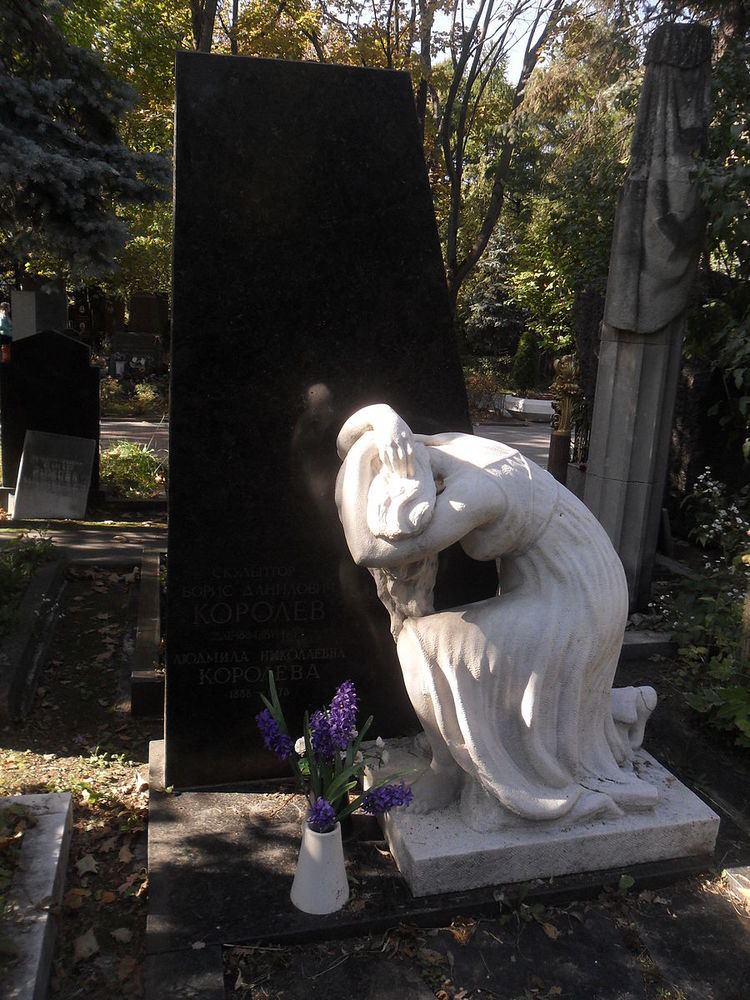Nationality Soviet Soviet Union Name Boris Korolev | Known for Monumental sculpture | |
Education the Lomonosov Moscow State University: Faculty of Physics and Mathematics (department of natural science) (1903– ), Faculty of History and History of Art; the Moscow School of Painting, Sculpture and Architecture (in the class of S. Volnukhin) (1910–13). Died June 18, 1963, Moscow, Russia Periods Cubism, Impressionism, Realism | ||
Urban zaaf boris korolev
Borís Danílovich Korolyóv (Russian: Борис Данилович Королёв, or Korolev); (1884/85–1963) was a Soviet sculptor-monumentalist, teacher and public figure.
Contents
Biography
As an artist Korolyóv stood at the origins of the Soviet school of sculpture, its mainstream, but he also was one of the leading figures in the avant-garde movement. In 1920s he played a prime role in the realization of Lenin's plan of monumental propaganda. In his own sculptural works Korolyóv combined Realism with elements of Impressionism and Cubism.

Born in Moscow and educated at the Moscow School of Painting, Sculpture and Architecture under Sergei Volnukhin, Korolev was a committed revolutionary, deported twice for his political activity, and a leading figure of avant-garde sculpture in revolutionary Russia.
He was an active participant in the execution of Lenin's Monumental Propaganda Plan of April 1918, which encouraged the destruction of Tsarist monuments and the rapid production of Soviet-themed sculptures and bas-reliefs. Unfortunately Korolev's rapidly produced 1919 concrete statue of Mikhail Bakunin, done in a Cubo-Futurist style and set up in Moscow, proved to be deeply unpopular and was dismantled within weeks.
Despite changing tastes, Korolev continued working in Cubist style into the 1920s, and became professor of sculpture at the Soviet state art school, Vkhutemas. In 2009 he was the subject of a major retrospective at the Tretyakov Gallery.
Korolyov is buried in Novodevichy Cemetery.
Significant works
His work includes:
